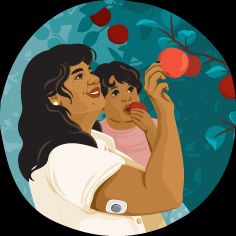Signs of adult malnutrition may include hair and muscle loss, among several other symptoms. If you notice these symptoms, seek professional help for proper nourishment.
A balanced diet is essential at every stage of life, from childhood to support development and into adulthood to continue maintaining your body’s systems.
But malnutrition can keep your body from functioning at its best.
The signs of malnutrition can look different for everyone. Signs and symptoms also depend on the type of malnutrition.
According to the
- Undernutrition, which includes:
- Stunting: low height for age
- Wasting: low weight for height
- Underweight: low weight for age
- Micronutrient deficiencies or insufficiencies: lack of essential vitamins and minerals
- Overnutrition, which includes:
- overweight and obesity
- health conditions such as heart disease, stroke, diabetes, and cancer
The type of malnutrition affects the signs and symptoms.
For undernutrition, you may notice the following:
- visible muscle wasting, particularly around your temples, clavicles, and thighs
- unintentional weight loss of at least 5% to 10% of weight over 3 to 6 months
- changes in your skin, such as dry, flaky, or pale skin, and slow wound healing
- changes in your hair, such as hair thinning; brittle, weak, or easily breakable strands; and easily pluckable hair
- changes in your nails, such as brittle, ridged, or spoon-shaped nails
- getting sick often and taking a long time to recover
- lack of interest in food and drink or a decreased appetite
- feeling cold frequently and being unable to warm yourself up
For overnutrition, signs and symptoms may include:
- a body mass index (BMI) greater than 25 for most adults
- a weight-to-height ratio of at least 0.5 centimeters (0.2 inches)
- a positive energy balance, which is when the number of calories consumed exceeds the number of calories used
- joint and back pain
- difficulty doing physical activity or quickly tiring after physical activity
- increased sweating
- snoring
- difficulty breathing
About BMIHealth professionals
suggest using BMI along with other measures to provide a diagnosis of obesity. This may include taking into account:
- visceral fat
- body adiposity index
- body composition
- relative fat mass
- waist circumference
- genetic and metabolic factors
Not all common signs and symptoms of malnutrition result from the condition itself.
Some medications may cause overlapping symptoms, such as hair loss. Examples include:
- antidepressants
- chemotherapy drugs
- blood thinners and blood pressure medications
- weight loss drugs (GLP-1 medications)
- antiseizure medications
Other health conditions may also lead to signs and symptoms that could be confused with those of malnutrition. Such health conditions may include:
- thyroid disorders
- autoimmune diseases, such as lupus and alopecia areata
- kidney disease
- infections
- muscular atrophy and dystrophy
Some medications and health conditions may also lead to malnutrition, especially if you experience a suppressed appetite and low energy levels.
Malnutrition is a health condition seen around the globe and among people of all ages. But it’s particularly common in older adults, especially those with chronic health conditions.
The Illinois Department on Aging estimates that:
- 1 in 2 older adults is at risk of malnutrition or is already malnourished
- 1 in 4 older adults either reduce meal sizes or skip meals
- about 1 in 6 independent older adults are at high risk of malnutrition
Some risk factors for malnutrition among older adults may include:
- reduced appetite associated with aging
- difficulty chewing or swallowing
- limited mobility, which may affect food preparation
- social isolation and living alone
- limited driving abilities, which can make getting groceries harder
The first step is to make sure you’re eating a balanced diet that consists of:
You can consume most, if not all, of the necessary essential nutrients from a balanced diet alone.
It’s also important to schedule and attend regular physical exams with a doctor. Let them know about your diet. They can help determine whether you have malnutrition and develop a treatment plan for becoming properly nourished.
If you follow a restrictive diet due to cultural preferences, ethics, or other personal beliefs, you might also consider taking supplements.
But speak with a doctor or a registered dietitian first to make sure these are safe for you. Some supplements can negatively interact with medications or other health conditions.
Food and meal delivery programs
If you’re an older adult, or know someone who is, and have limited mobility, some organizations offer meal and grocery delivery services for free or at a low cost. Check out:
Malnutrition is a common health condition that may occur in adulthood, especially in older adulthood. It’s categorized as over- or undernutrition.
Physical symptoms of overnutrition in adults may include:
- joint and back pain
- difficulty doing physical activity or quickly tiring after physical activity
- increased sweating
Physical symptoms of undernutrition in adults may include:
- dry, flaky, or pale skin
- slow wound healing
- hair thinning and easily pluckable hair
- brittle, weak, or easily breakable hair strands
- brittle, ridged, or spoon-shaped nails
To help prevent malnutrition in adulthood and its consequences, prioritize eating a balanced diet and attending regular physical exams with your doctor. Supplementation can be an option when necessary, but only after speaking with your doctor.




